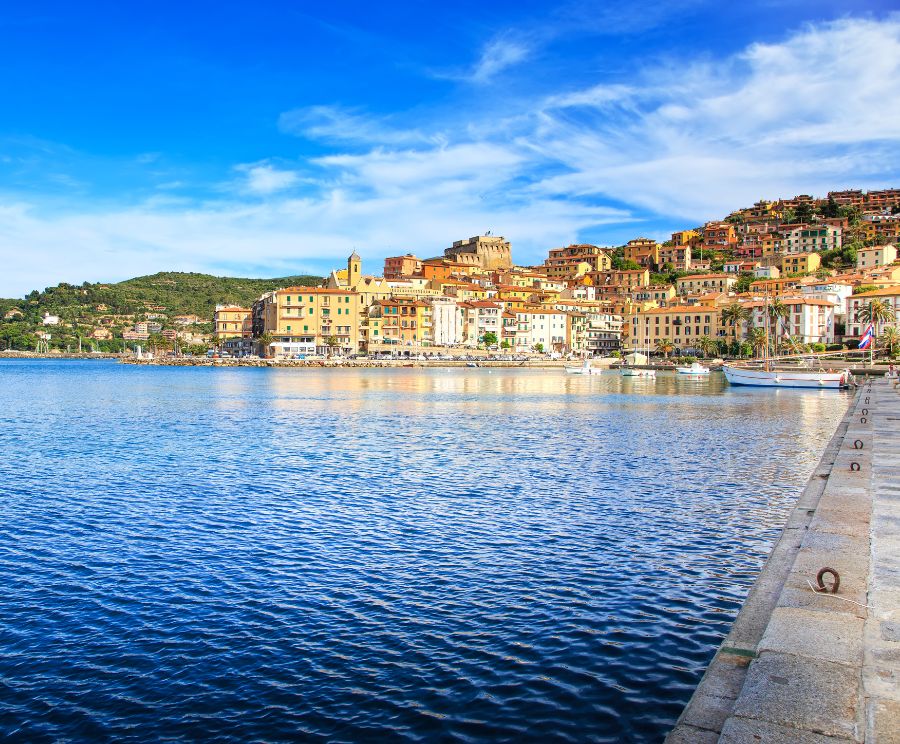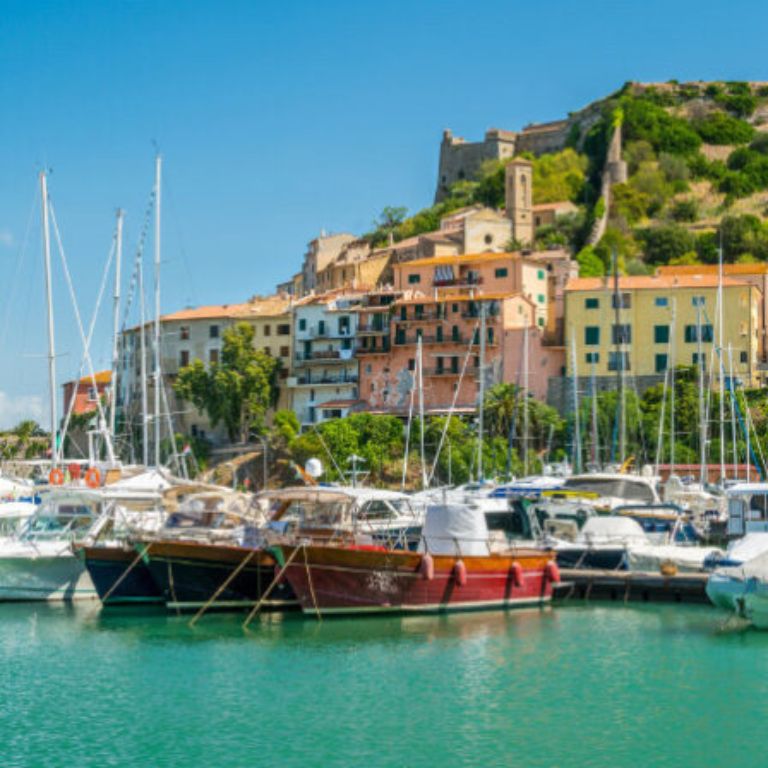The history of Monte Argentario
Connected to the mainland by the Giannella and Feniglia tombolos, Monte Argentario boasts a rich historical and cultural heritage.
Nowadays, Monte Argentario is a well-known tourist resort thanks to its wonderful beaches and expanses of olive groves and vineyards, which make it an enchanted place to get lost in, but few people know of the opportunity to immerse themselves in its centuries-old history, starting with the first human settlements dating back to ancient times, as demonstrated by the various archaeological finds in at least 19 caves that have been inhabited.
Its central position in the Tyrrhenian Sea has always made it a safe harbour for all navigators.
Given its strategic position, it was equipped with watchtowers and signal towers as early as the Bronze Age to cope with the constant danger of incursions from the sea, but a defence system of the entire coastline of the Promontory was only realised in the 15th century, under the rule of the Republic of Siena, to reach its climax with the rule of the Spanish, who transformed Argentario into a veritable military fortress with a formidable complex of fortifications, creating the Stato dei Presidi (State of the Garrisons) that included Orbetello, Porto Ercole, Porto Santo Stefano and Talamone, with the addition of Porto Longone on the Island of Elba in 1602.

In Roman times, the family of the Enobarbi Domizi, by profession ‘Argentarii’ (money lenders), obtained as the balance of the sums paid to the Republic during the II Punic War, the entire Promontory, which was therefore called ‘Argentarium Mons’.
If the area experienced a period of great fame and fascination, even with emperors such as Domitian and Trajan, it also experienced another period of relative isolation, also due to the swamping of the coast, during the barbarian invasions between the 6th and 9th centuries, until it became a possession first of the Aldobrandeschi family and then of the Republic of Siena (1410), passing to the Orsini family of Sovana and to the King of Naples Ladislao.
In 1557, following a treaty with Philip II of Spain, when Argentario became part of the Presidi State, Spanish control over maritime links with the Viceroyalty of Naples and the Church State was strengthened, which lasted until the Napoleonic interlude, which ended in 1815 when Monte Argentario passed to the Grand Duchy of Tuscany and finally to the Kingdom of Italy.
Porto Santo Stefano, today the seat of the municipality, became infamous during World War II due to the violent bombardments it suffered, which made the Promontory the second municipality in Italy most destroyed by Anglo-American air raids.






